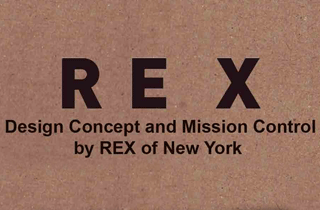
...As well as addressing the academic side of architecture, the Biennale is an occasion where big-name architects and designers can showcase new projects, arranged in different pavilions, each with different themes. The Biennale is currently held in the Biennale Gardens.-crowdsourced / WIKIPEDIA
...the Biennale offers an incredibly diverse and dense display of ideas and responses that aim to provoke us to reconsider the role of the architect and the ways in which we create public life for citizens of the contemporary environment.-Linda Taalman / DWELL
The Venice Architecture Biennale is the world’s most important celebration of contemporary architecture.-Jonathan Davies and Anna Meyer / DESIGN WEEK
The Biennale is a unique insight into what is happening in the architecture profession around the world at this moment in time.
If one did not know that the media constantly exaggerates, one could almost conclude ... that the Venice Biennale of Architecture really is the world’s most important architecture exhibition.-Wolf D. Prix / COOP HIMMELB(L)AU
... let us not deny the truth. This event is an expensive danse macabre. In a city of plunder (an exhibition of plunder) hordes of tourists (architects) roll along broken infrastructure in order to satisfy their petit bourgeois desire for education (in the case of the architects: vanity, envy, schadenfreude, suspicions). Even the glamour that the visitors are supposed to feel is staid and faked by the media for whom a star architect is like a film star.
In truth it is all hollow, arduous, exhausting, bleak and boring. It is no longer about lively discussion and criticism of topics in contemporary architecture, but rather about empty, conservative and perhaps populist shells that are charged with feigned meaning.
If we are to accept a certain validity in Prix's remarks, it is important not to attribute special privilege to the Venice Biennale — it is only indicative of a more widespread political naivety in contemporary architecture, and the ineffectiveness of its various governing institutions. The failure, if you will, is endemic. However, unlike Prix, I don't think the starchitects are at the heart of the problem. I would prefer to lay the blame elsewhere.-Jack Self / DOMUS
Coop Himmelb(l)au’s Wolf D. Prix came under fire for this attack (especially when it was realized he didn’t even set foot at this year’s Biennale). And yet, had he written this critique for any other Biennale, he wouldn’t have been so far off. The Biennale is, after all, an expensive affair of prosecco-filled parties and, often, inaccessibly esoteric exhibits
Prix hedged his bets that this Biennale, with its fluffy-sounding name, “Common Ground,” would be just like its precedents. Unluckily for Prix, it wasn’t. In fact, it was probably the most politically-engaged Biennale yet.
...that is exactly what this year’s Venice Biennale was – and should be. Not just a display of architectural ingenuity but a “fresh look, from the [common] ground up, at what architecture really is.” Even if was at times reductive or idealistic, the Biennale grappled with our political reality, reflected our cautious optimism, and put forth the question of our decade: what purpose do we serve?
Vanessa Quirk / ARCH DAILY
Biennales by their nature are sprawling, skin-deep omnibus festivals, contrived above all for tourism and congenitally awkward as a medium for architecture...-Micheal Kimmelman / THE NEW YORK TIMES
It (This year's Bieannale) pays almost no attention to the developing world, to designers from Africa or China, and precious little to female architects, aside from Zaha Hadid, who, like Peter Zumthor, Renzo Piano, Peter Eisenman, Bernard Tschumi and a surprising number of the old boldface names, hogs much of the spotlight.
The Bieannale is a typical gossip place. "who slept with whom?,Who drank too much? Who is on their way down because they drank too much?"..."His last project wasn't very good, he must have been drunk all the time. Maybe he is going blind?" Its a lot of personal gossip.-Kjetil Thorsen / SNØHETTA
But the exhibition itself, despite that determinedly optimistic and wide-ranging approach, feels limited, exclusive, stiff, starched and a bit cloistered. And for a show that is so keen to question the value of architectural celebrity — Chipperfield writes in the catalog that he wanted it to "emphasize shared ideas over individual authorship" and reject "solitary and fashionable gestures" — this biennale includes an awful lot of stars, many of them longtime friends and colleagues of Chipperfield's.
Though Chipperfield makes a big show of casting a wide net with this biennale, mostly what he's caught with it are the kind of big fish immediately recognizable to anyone familiar with the architectural scene of 20 or 25 years ago. The architects featured most prominently include Norman Foster (given two separate rooms to work with), Renzo Piano, Jacques Herzog and Pierre de Meuron, Zaha Hadid, Peter Eisenman, Rafael Moneo, Alvaro Siza, Peter Zumthor, Bernard Tschumi and Jean Nouvel.
Christopher Hawthorne / THE LOS ANGELES TIMES























































0 comments:
Post a Comment